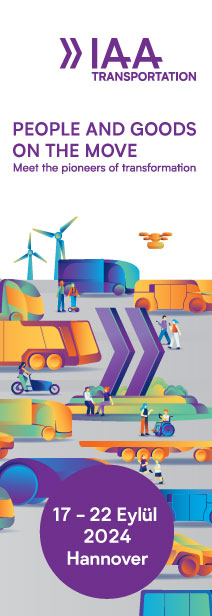Knorr-Bremse Achieves Strong Results in First Half of 2022 Despite Global Economic Crisis and Russia Sanctions
Frank Markus Weber, Executive Board Spokesman and Chief Financial Officer of KnorrBremse AG: “Knorr-Bremse can handle crises. We have demonstrated this on multiple occasions over the years. Knorr-Bremse continued to generate solid financial results in the second quarter of 2022 despite the difficult economic situation globally and a persistently volatile market environment. In difficult conditions in particular, our business model shows its high resilience and strength in both divisions. Nonetheless, 2022 is an especially hard and challenging year for our suppliers, customers, and ourselves. We will fully offset the enormous impacts of the strong increase in inflation with our own measures, including for example price increases and savings. We established a profit optimization program back at the start of the year for this purpose. However, our withdrawal from Russia-based business in connection with international sanctions and the difficult market conditions in China have made a noticeable impact on our business.” Order book reaches record level again, revenue remains stable At € 4,038 million in the first half of 2022 (H1 2021: € 3,603 million), order intake increased by 12.1% and was thus clearly above the previous year’s result. The high demand in rail vehicles in particular ensured a boost in growth. The order book as at June 30, 2022, was worth approximately € 6.7 billion (June 30, 2021: € 5.2 billion), another new record.
Knorr-Bremse’s revenue in the first six months of the year was € 3,406 million and was therefore just under the previous year’s level of € 3,419 million. Whereas OE revenues dropped slightly, aftermarket revenue rose by 6.3%. Overall, this led to aftermarket having a
significantly larger share in total revenue, growing from 34.2% to 36.4%. The highest revenue growth was achieved in South America (32.5%), North America (18.7%), and Europe/Africa (3.7%). In Asia, on the other hand, revenue dropped by 21.2% primarily as a result of the
developments in China. High profitability despite crisis, profit optimization program exhibiting considerable impact.
Operating EBIT in the first half of 2022 was € 365 million (H1 2021: € 495 million) despite the globally tense economy. The operating EBIT margin was 10.7% (H1 2021: 14.5%). The yearover-year changes mainly stem from the following factors that have intensified further in
recent months: the fallout of the Russia–Ukraine war and Knorr-Bremse’s previously announced withdrawal from business in Russia. There are also the Covid-19 restrictions in China, where rail operators are responding to the significant, pandemic-induced decreases in trainloads by reducing services and investing less in new rolling stock. The situation is heightened by the very significant cooldown of China’s truck market. Knorr-Bremse does not expect either market in China to recover significantly in the short term.
In the first six months of the year, free cash flow amounted to € -267 million (H1 2021: € 108 million). The reasons behind this development include a proactive buildup of inventories to mitigate potential supply shortages and to ensure the planned growth of revenue in the second half of the year. However, Knorr-Bremse does expect that free cash flow will improve significantly in the second half of the year.
In order to respond to the overall difficult market conditions, the Knorr-Bremse Executive Board launched an extensive Profit & Cash Protection Program back at the start of the year, with comprehensive measures for pricing and costs across the entire Knorr-Bremse Group.It fully compensates for the significant increase in inflation that is currently burdening the cost structure in both divisions.
RVS has large order book and new investments in digitalization
The Rail Vehicle Systems division continues to be confronted by the challenges of the Covid19 pandemic in a volatile market environment. Its revenue during the first half of the year declined by -3.4% from the comparable prior-year period. This development was particularly
attributable to the declining market in China. The division’s operating EBIT in the first half of the year was € 240 million and below the corresponding prior-year figure of € 301 million; the operating EBIT margin reached 15.0% (H1 2021: 18.2%). Order intake rose very significantly to € 2,128 million (H1 2021: € 1,451 million). All regions, and Europe most of all, profited from this development. The order book also developed very nicely and was worth € 4.8 billion at the end of June after being valued at € 3.5 billion the previous year. This figure already reflects orders canceled as a result of the sanctions on Russia.
RVS is consistently continuing its digitalization strategy this year, too. For example, Knorr-Bremse signed a strategic cooperation and investment agreement with Nexxiot, a leading tradetech provider, in May and became the company’s largest shareholder at the same time. Nexxiot is specialized in equipping train carriages and shipping containers with IoT technology. The goal behind the agreement is to connect the brakes, doors, air-conditioning systems, hygiene systems, and other systems of Knorr-Bremse with Nexxiot’s digital ecosystem to generate data that can be the basis for new business models. The added value for customers is that train availability and life cycle costs can be optimized.
CVS grows order book and also invests in high-growth markets of digitalization and connectivity
Order intake in the Commercial Vehicle Systems division fell in the first half of 2022 to € 1,911 million (H1 2021: € 2,153 million). The order book as at June 30, 2022, on the other hand, had increased significantly to more than € 1.9 billion since the prior-year period (€ 1.7 billion). The division was also able to increase its revenue by 2.5% to € 1,809 million (H1 2021: € 1,765 million) despite the global supply constraints within the commercial vehicle industry. This resulted from significant growth in aftermarket business from which all regions were able to benefit, except for Asia-Pacific. EBIT in the Commercial Vehicle Systems division fell in the first six months of the year to € 151 million (H1 2021: € 214 million). The operating EBIT margin was 8.3% after 12.1% during the prior-year period. The lower profitability is due to the very significant reduction of the truck market in China as well as the supply shortages and increased inflation, which largely can only be passed on to customers in the form of price increases after a time delay.
Commercial Vehicle Systems is also determinedly expanding its business model, with Knorr-Bremse having signed a contract to acquire a majority interest in Spain’s Cojali S.L. in June. This company is a global developer of diagnostics systems for commercial vehicles and other vehicle types. Using Cojali’s diagnostics capabilities, workshops and fleet operators analyze the status of vehicle components precisely and quickly for any brand and receive comprehensive help with troubleshooting. Knorr-Bremse is therefore investing in the growing market for connectivity applications and continuing to build up its in-house digitalization capabilities.
Guidance for 2022
Knorr-Bremse can fully compensate for inflation-related increases in costs through its own measures. However, the withdrawal from business in Russia as well as the significantly dampened market conditions in China are putting pressure on results. Viewing the year as a whole, Knorr-Bremse is expecting a lower operating EBIT margin due to these effects, with
China bringing it down by roughly 1.2 percentage points and the withdrawal from business in Russia by roughly 0.7 percentage points. Knorr-Bremse now expects revenue between € 6,900 million and € 7,200 million (previously € 6,800 million and € 7,200 million), an operating EBIT margin between 10.5% and 12.0% (previously 12.5% and 14.0%), and free cash flow between € 300 million and € 500 million (previously € 500 million and € 600 million), assuming that foreign-exchange rates remain as they are currently, a predominantly stable macroeconomic environment, no new Covid-19 lockdowns, no significant increase in inflation, and no additional supply chain issues caused by potential energy shortages.











